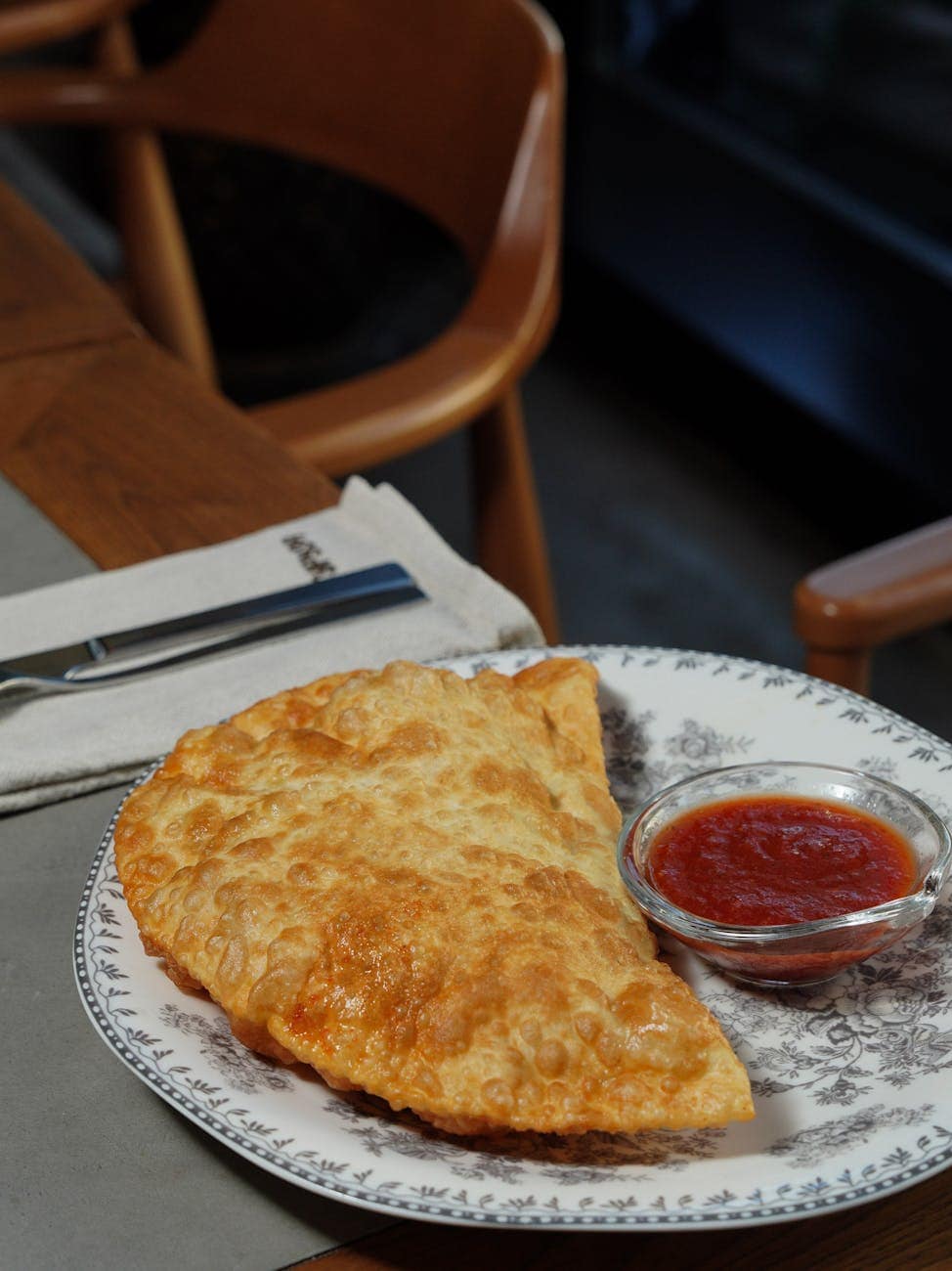The Dominican Republic’s north coast has taught me many lessons—how to dodge moto‑taxis, how to predict rain by the smell of seaweed—yet the most delicious curriculum unfolds at sidewalk food stalls once dusk smudges the horizon. Ordering street food here is equal parts vocabulary drill and social dance. Memorize a phrase, fumble the delivery, and you risk bland chicken or, worse, losing your place in a queue that ignores Western notions of personal space. Nail the tone, and you’ll receive extra tostones slipped into your wax‑paper pouch with a conspiratorial wink. This post decodes that exchange so you can step up to any stainless‑steel cart in Puerto Plata, Santiago, or Santo Domingo and walk away with a feast—and maybe a new nickname.
First Contact: Reading the Cart Before You Speak
Every street‑food cart broadcasts non‑verbal data: the sizzle tempo of hot oil, the color of the squeeze bottles, the way napkins are stacked. Before uttering a single Spanish word, I scan for clues that guide my choice of greeting. A tidy cart with uniformed attendants suggests formality; I soften my opener with a cordial “Buenas noches, doña.” A raucous corner grill where bachata thumps and smoke billows invites casual camaraderie; I drop a quick “¿Qué lo qué, mi hermano?”—Dominican shorthand for “What’s up, bro?”—to blend in.
Establishing eye contact is step two. Vendors juggle multiple orders, and shouting from the back of the line rarely works. Instead, I raise a hand slightly, catch the cook’s gaze, and deliver my first phrase in a clear mid‑volume tone. It is less about claiming priority and more about entering the vendor’s mental queue.
Ordering Pica Pollo: Crispy Confidence in Two Sentences
Pica pollo—a glorious pile of marinated chicken hacked into uneven chunks and deep‑fried until the skin shatters like sugar glass—is arguably the crown jewel of Dominican street cuisine. The standard combo includes boiled yuca or tostones, plus pickled red onions for brightness. When it is my turn, I lean in just enough to be heard over the crackle of oil and say:
“Dame un cuarto de pica pollo con yuca, sin muchas frituras, por favor.”
The verb “dame” signals familiarity, acceptable in street settings; “por favor” at the end keeps the request polite. I specify “un cuarto” because whole chickens are billed in fractions—quarter, half, or full. Adding “sin muchas frituras” tells the vendor I want minimal breaded scraps; otherwise, they may pad the serving with crunchy debris to make the box look fuller.
If I arrive late and suspect the chicken has cooled, I ask directly:
“¿Está recién salido o lleva un ratito?”
Vendors respect customers who care about freshness. Should the answer disappoint, I pivot to another item instead of pushing them to re‑fry dry meat.
Payment concludes the ritual. Prices float with oil costs, but I always ask the total in Spanish even if I know it: “¿En cuánto me queda todo?” The phrase connotes collaboration rather than haggling. I pay in exact change when possible; the vendor’s gratitude often surfaces as an extra scoop of pickled onions.
Empanadas and Pastelitos: Mastering Fillings Without a Menu
Dominican empanadas (also called pastelitos, depending on region) are fried discs of dough folded over fillings—everything from shredded chicken to pizza cheese. Carts seldom display options. The cook rattles them off, and you must decode on the fly. My strategy is to start with an open question that buys thinking time:
“¿De qué sabores tienes ahora mismo?”
Notice the adverb tandem “ahora mismo,” which acknowledges real‑time inventory changes. The response might list: “pollo, queso, jamón‑queso, cangrejo, y mariscos.” I lock eyes, smile, and reply:
“Perfecto. Regálame dos de pollo bien doraditas y una de queso, sin salsa.”
The courteous verb “regálame” literally means “gift me” but functions as a friendly request; “bien doraditas” ensures the pastry is golden‑brown rather than pale. If I crave the house sauce—often a ketchup‑mayo‑garlic concoction—I modify: “con salsita aparte, porfa,” meaning sauce on the side.
Sometimes the cart runs a promotional combo: three empanadas plus a soda. Instead of asking “what deals do you have?” I propose:
“Si me llevo cuatro, ¿me incluyes una cola?”
Framing the request as a hypothetical “if I take four” softens negotiation and usually yields a nod.
Chimis: The Art of the Dominican Burger
A chimi is not a burger in the American sense. Imagine ground pork or beef seasoned with Worcestershire, garlic, and oregano, seared on a griddle, topped with shredded cabbage, tomato, and a pink sauce, then squeezed into a crusty bread roll. Ordering a chimi requires specifying meat type, bread toast level, and toppings pace. My default line reads:
“Me haces un chimi de cerdo, bien tostado, con todo menos pique.”
“Con todo” signals I want the standard toppings, while “menos pique” removes the spicy hot sauce. If I need two but one free of onions for a friend, I split the order in one breath to avoid confusion.
“Son dos chimis: uno completo y otro sin cebolla, por favor.”
Vendors work rhythmically; bundling instructions saves repetition.
Yaniqueques and Arepitas: Managing Queue Chaos
Yaniqueques resemble large, thin puffed‑up disks of fried dough, often sold near beaches or bus terminals. There is usually no orderly line—customers cluster around the oil drum. I step forward, maintain a half‑meter space, and assert presence with a friendly announcement rather than an order:
“Estoy detrás de la señora de la blusa azul para un yaniqueque grande, gracias.”
By identifying the person before me, I stake my spot without hostility. Once the vendor nods, I wait patiently; Dominican street culture values calm perseverance over aggressive positioning.
Payment Lingo: Exact Change and the Magic Word “Vuelto”
Street vendors prefer small bills to avoid making change. Before ordering, I pat my pocket for 50‑ and 100‑peso notes. If I must pay with a 500, I ask permission first:
“Solo tengo quinientos; ¿tienes vuelto?”
“Vuelto” means change; using it underscores local knowledge. Some nights the vendor’s cash float is low. If they apologize—“No tengo vuelto, joven”—I either buy an extra item to round the price or promise to return with change, a commitment I keep to preserve goodwill.
Sauce Station Etiquette: The Subtle Grammar of Self‑Service
Many carts lay out squeeze bottles: mayo‑ketchup (mayochupa), garlic mayo, spicy pique, and sometimes a secret green sauce. I disinfect my hands with pocket sanitizer before touching the bottle, a gesture not lost on vendors. While dressing food, I avoid smothering toppings in a single squeeze; instead, I zigzag lightly and step aside. If someone bumps me mid‑zigzag, I respond with “Permiso,” never “Perdón,” because I am asking passage, not apologizing for wrongdoing.
Eating in Place vs. To Go: Choosing the Right Container Verb
If I plan to wander, I request packaging upfront:
“Para llevar, bien envuelto, que voy caminando.”
“Bien envuelto” invites the vendor to double‑wrap oily items. When dining roadside, I ask for the on‑site option:
“Lo como aquí; ¿me pones una servilletica extra, porfa?”
The diminutive “servilletica” feels friendly and acknowledges that one napkin is never enough.
Late‑Night Runs: Safety Phrases and Courtesy
Past midnight, street‑food culture shifts. Crowds thin, but the chance of lubricated patrons rises. When I sense tension, I lean on formal Spanish to re‑establish decorum with the vendor:
“Caballero, buenas noches. ¿Todavía está despachando comida?”
Formality signals I am not part of any rowdy clique. If an inebriated stranger tries to jump the line, I guard my spot with calm clarity:
“Disculpe, estoy esperando antes que usted.”
Tone matters; it must be firm yet nonthreatening, or the vendor may eject both customer and complainer.
Clean‑Up and Gratitude: Exiting the Transaction Gracefully
After eating, I always dispose of trash in the vendor’s bin, even if it is a makeshift cardboard box lined with a plastic bag. I then step back to the counter, catch the cook’s eye, and deliver one last phrase:
“La comida estaba riquísima; muchas gracias, y bendiciones.”
The blessing “bendiciones” carries cultural resonance, especially in a Catholic‑infused society. Many cooks respond with “Amén” or “Vaya con Dios.” These micro‑exchanges fertilize future encounters; next visit, the cook may shout “¡Mi jefe!” before I speak.
Building Vocabulary Through Repetition Rather Than Lists
I did not memorize a bullet list of street‑food vocabulary; I built muscle memory by repeating certain verbs in real contexts: “dame,” “echa,” “pónme,” “corta,” “calienta,” in combination with nouns like “mori‑soñando,” “arepita,” “longaniza.” My journal shows pages where phrases appear scribbled alongside grease stains—documentation born in the wild, not the classroom.
Final Reflection: Fluency Measured in Grease and Gratitude
Learning to order street food in Spanish has taught me a truth textbooks skip: fluency is as much emotional intelligence as lexical precision. You can conjugate “dorar” in the subjunctive, yet if you forget to greet the fry cook, your empanada will arrive lukewarm and lifeless. Conversely, a well‑timed “Mi amor, ese pica pollo se ve brutal” can melt culinary steel and earn you the crunchiest wing.
So next time twilight paints Malecón Boulevard pink and the smell of sizzling garlic floats through the palm fronds, step up to a cart, breathe in the aroma, and let the Spanish roll off your tongue. Forget perfection; aim for warmth, clarity, and respect. Your reward will be a cardboard box dripping with flavors no restaurant linen could replicate—and maybe, if the stars align, a new friend who calls you “vecino” every time you pass.
Que aproveche, y que tu barriga cante merengue de felicidad.



